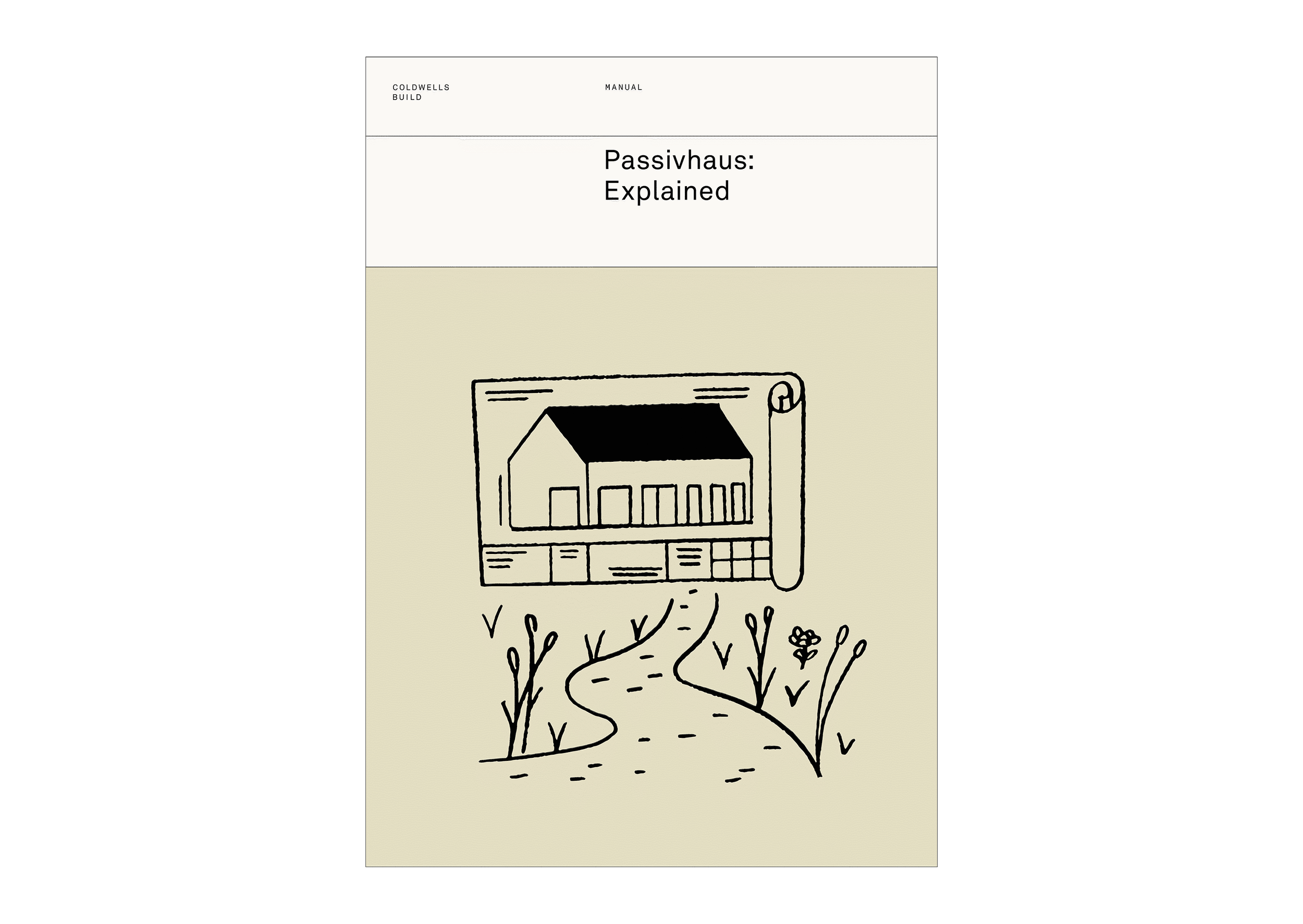
8 Things to Know Before Building a Passivhaus Home
If you’re new to Passivhaus, Rupert Daly, Passivhaus designer and associate director at John Gilbert Architects, provides insight into this low energy building standard. [10 Min Read Time]
Read
Think Scotland is too cold for air source heat pumps? In this journal, the experts explain why they DO work and how proper design and installation are key to reliable performance.
Air source heat pumps extract heat from the air outside and boost it to warm your home. But because Scottish winters can be chilly, we sometimes hear from people who worry there’s not enough heat in the air to make them work properly, or they’ve heard of systems that ‘stopped working’ when temperatures dropped below 0°C.
To set the record straight, we spoke with Robert Devine of Aberdeen Air Source Heating, who explains why air source heat pumps DO work in Scotland and where these misconceptions come from.
But before we get into the details, let’s take a quick look at what an air source heat pump actually is.
Air Source Heat Pumps [ASHPs] are low-carbon heating systems that run on electricity.
"They work much like a fridge in reverse," explains Robert. "In a fridge, heat is removed from the inside and expelled at the rear. With an ASHP, it’s the opposite: heat is extracted from the outside air [even on really cold days] and transferred indoors via your radiators or underfloor heating to heat your home and hot water."
Put simply, ASHP’s don’t generate heat by burning fuel [oil and gas], they just move it from one place [the outside air] to another [your home].

"The ASHP has an outdoor unit with a large fan that draws in outside air over a heat exchanger coil containing a special liquid called refrigerant," explains Robert.
"This refrigerant has a very low boiling point, meaning it can absorb low-grade heat from the outside air and evaporate, turning from a cold liquid into a warm vapour state — basically a gas."
The now-gaseous refrigerant then passes through a compressor. The compressor squeezes the gas, increasing its pressure and causing the molecules to cram in tightly together, collide with each other and instantly heat up.
This heats up the heat exchanger which transfers the heat into the water that we pump around our radiators.
An air source heat pump can be more than 100% efficient, but how is that possible? Let's break down what "efficiency" really means in this context.
"With a gas boiler, we burn fuel [gas] to generate heat," explains Robert. "If you take 1 kWh of gas, set it on fire and release 0.9 kWh of heat, that’s 90% efficient. The missing 0.1 kWh is lost in water vapour as uncaptured latent energy."
A heat pump operates differently. It uses a small amount of electricity to move a larger amount of heat from one location [the outside air] to another [your home].
So, an ASHP uses 1 kWh of electricity and in that time extracts 3 kWh of heat from the outside air.
The total heat delivered to your home would be: 1 kWh [electrical input] + 3 kWh [heat from air] = 4 kWh worth of heat.
That’s what we call a Coefficient of Performance [COP] of 4. Or, expressed as a percentage, 400% efficiency.
It’s important to understand that the efficiency of an air source heat pump isn’t fixed, it varies depending on the weather. As the temperature drops, the system has to work harder to extract heat.
"In milder conditions, say around 7°C, most modern ASHPs run at a COP of 3 to 4," says Robert. "That means for every 1 kWh of electricity, you’re getting 3 to 4 kWh of heat."
In extremely cold conditions [around -20°C] performance might drop to a COP of 1.5 to 2.5. While this means slightly higher electricity consumption, it’s still more efficient than a traditional heating system.
Yes, absolutely.
"Modern air source heat pumps are designed for cold climates," says Robert. "They’re used in places like Scandinavia and Canada, which are much colder than Scotland." In Norway, for example, two-thirds of households use a heat pump.
It’s true that Scandinavian homes are typically better insulated than many in Scotland. "That’s why if you’re installing a heat pump in an older home, we always recommend upgrading the insulation to maximise performance and efficiency," Robert adds.
Many air source heat pumps can operate efficiently down to -20°C, with some high-performance units functioning as low as -25°C. Considering that average winter temperatures in Scotland generally hover between 0°C and 5°C, most ASHPs are well within their operational range.
In cold weather, it’s normal for frost to build up on the outdoor coil. But heat pumps are designed to handle this with an automatic defrost cycle. During this cycle, the system temporarily reverses to warm the coil, resulting in a short drop in heating output. Once defrosted, the system returns to normal operation.
"Even when it’s 0°C or below outside, the air has heat energy in it," Robert explains. "Zero degrees is just the freezing point of water. The real 0ºC is known as absolute zero, which is -273°C. So unless you’re living down at those temperatures, there’s a heat pump out there that’ll work."
If you’ve heard about heat pumps struggling to operate in cold weather, it’s very rarely the technology to blame, it’s usually poor design, incorrect sizing, or bad installation. Cold conditions simply expose those flaws.
To ensure your air source heat pump works efficiently, the following are essential:
"Insulation is the single most important factor," says Robert. Heat pumps work best in energy-efficient or Passivhaus homes.
If your home is poorly insulated with draughty windows, the system will have to work harder to maintain a comfortable temperature, reducing its overall efficiency. "If you’re putting a heat pump into an older home, upgrading insulation will make a huge difference."
Your heat pump must be accurately sized for your home’s heat loss. "If the heat pump is undersized, it’ll struggle to keep up in cold weather. Too big, and it’ll short-cycle, constantly switching on and off, which reduces efficiency and puts strain on the system." A professional installer should always carry out a full, room-by-room heat loss calculation to make sure the heat pump is matched to your home’s specific needs.
"A heat pump is only as good as its installation," says Robert. "If it’s not properly designed and set up for your home, it won’t run efficiently, even if you’ve bought the best equipment out there." That’s why it’s essential to use an installer certified by the Microgeneration Certification Scheme [MCS], which ensures they meet recognised industry standards for quality and competence. "An MCS-certified installer will carry out accurate heat loss calculations, properly commission the system and ensure it runs as efficiently as possible," Robert adds.
You can find certified installers using the MCS Find a Contractor tool or the Home Energy Scotland Renewables Installer Finder.
Yes. There are a few schemes available to help with the cost of installing an air source heat pump in Scotland:
Air source heat pumps work exceptionally well in Scotland, even through the depths of winter and most modern models are designed to operate efficiently in temperatures as low as -20°C.
"The technology is solid, it’s been proven in places far colder than here," says Robert. "What really matters is getting the design, installation and your home’s insulation right."
A well-insulated home, an accurately sized system and a professional, MCS-certified installer are the foundations of a reliable setup. "If those things are in place, your heat pump won’t just keep your home warm," Robert adds, "it’ll do it efficiently, affordably and with a much smaller carbon footprint."

A skilled joiner with over 20 years’ of experience, Ross began his career as an apprentice building new homes in Aberdeenshire. He broadened his craft, managing builds in Australia and Canada. A certified Passivhaus tradesperson, Ross has spent his career determinedly striving to raise the standard of UK homes.

If you’re new to Passivhaus, Rupert Daly, Passivhaus designer and associate director at John Gilbert Architects, provides insight into this low energy building standard. [10 Min Read Time]
ReadWe’ve created 8 free-to-download guides packed with tips on budgeting, plot finding and self-building. Essential reading for anyone planning to build their home.

An introduction to the Passivhaus standard — what it is, how it works and the steps you can take to achieve it in your new home.
Download